
Dance felicitations offered to Kumudini Lakhia
- Dr. S D Desai
e-mail: sureshmrudula@gmail.com
June 4, 2019
Kumudini Lakhia, founder-director of Kadamb Centre for Dance and Music
in Ahmedabad (est.1967) completed 89 years on May 17. The faculty and
current senior disciples at Kadamb as also Bijoy Sivram of J G College
of Performing Arts saw the importance of the day and with excitement and
imagination planned and held special events to felicitate her - the
former on the premises of Kadamb, the Kathak centre of international
repute, the latter at the spacious auditorium of Shivanand Ashram with
the Governor of Gujarat as the chief guest.
Slide show

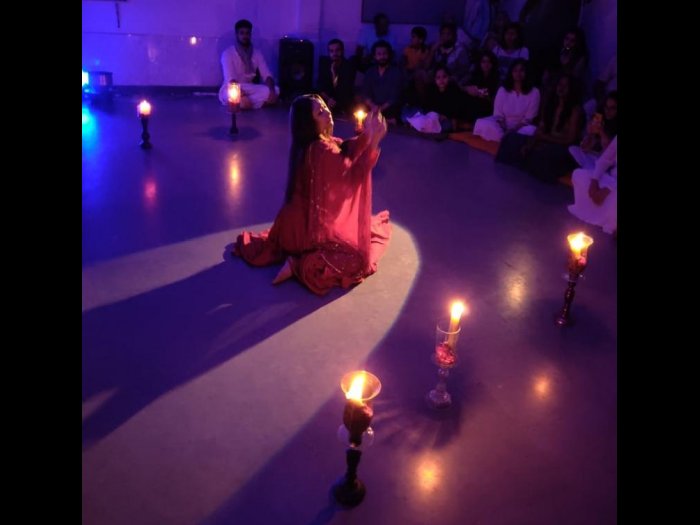
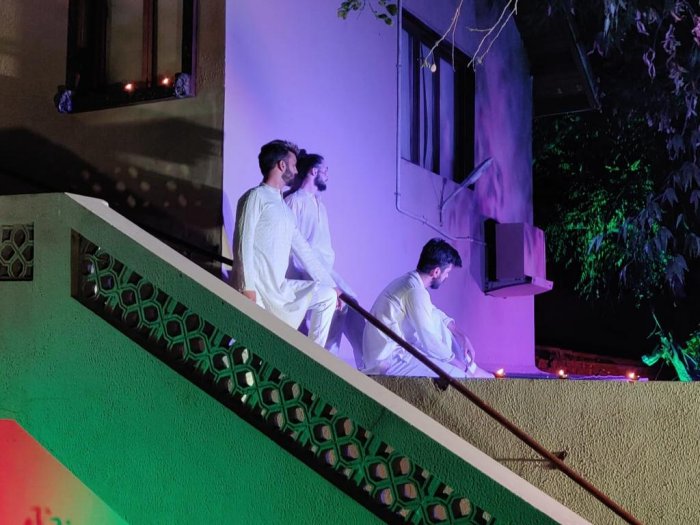
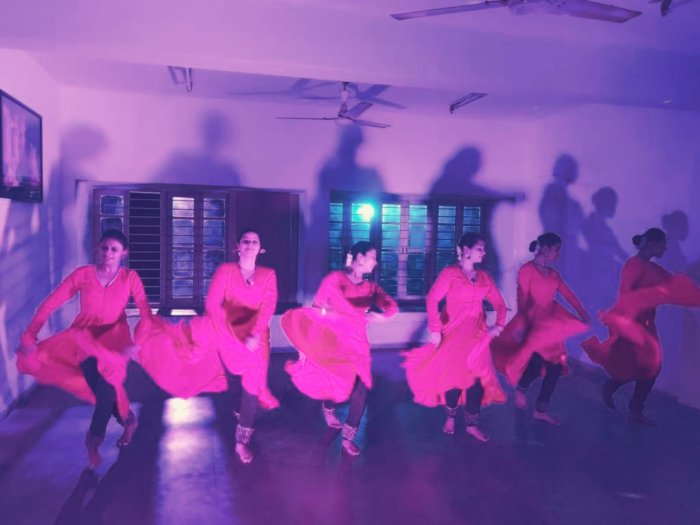
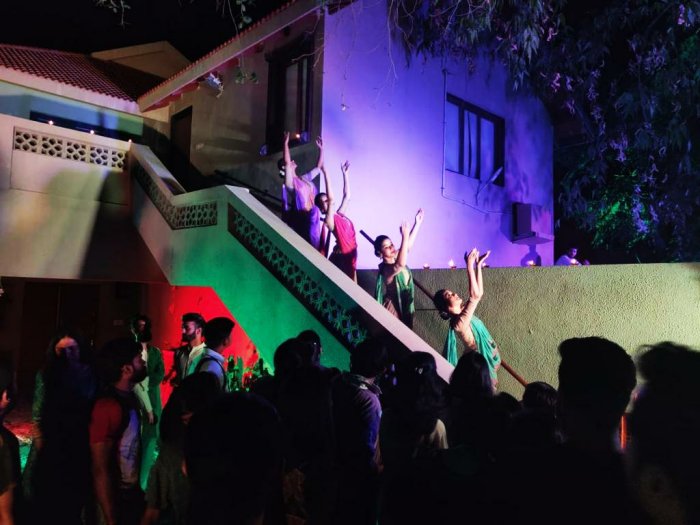

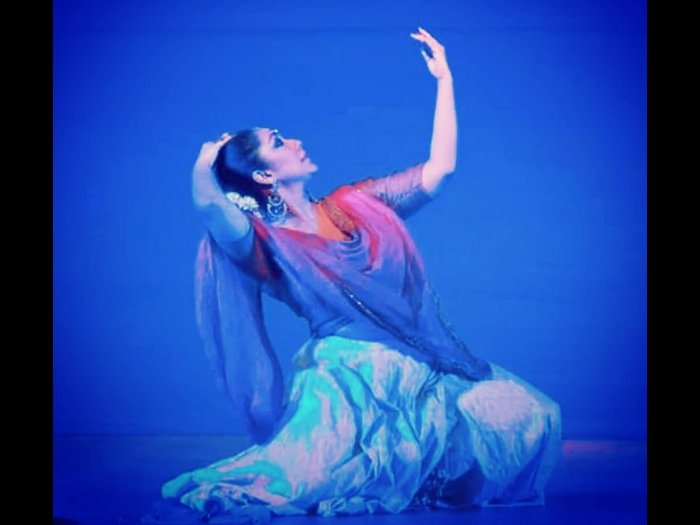
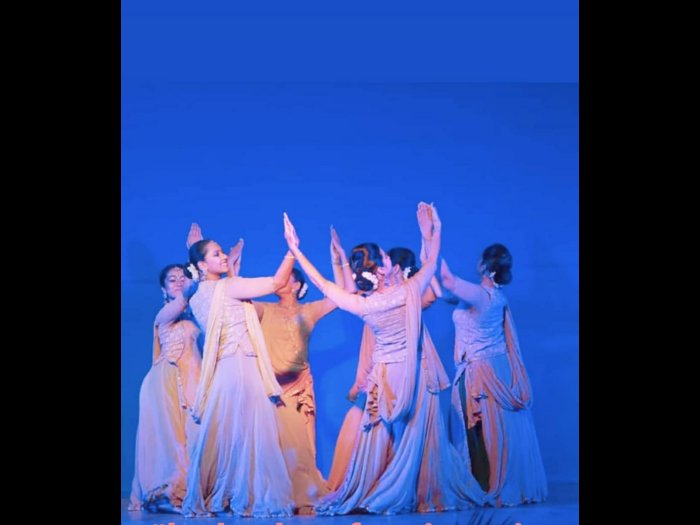
Dance the Space at Kadamb on May 17, repeated on 18, thrilled the
invitees - among them dancers, an architect, a sculptor, an art
director, a costume historian and designer and a heritage
conservationist. As evening shadows with a peacock's distant notes
receded, everyone including Kumiben, as she is fondly called here,
occupied the chairs placed on the ground and the building with a
stairway leading up got just slightly lit up (Lights, Harry). Sanjukta
Sinha, who has imaginatively conceptualized and choreographed this
dainty 30-minute site-specific dance piece, makes a few observations and
with a smile requests the audience to rise and move with the dancers.
To begin with, in front on the stairs appear as in a miniature painting
four pretty girls (Mihika, Mitali, Vidhi, Krutika) with a flowing
dupatta and hands held skywards in gratitude under the edge of a tiled
roof and leafy twigs hanging. The viewers' appreciative gaze has them
animated and, to soft notes from the sarangi, they elegantly descend
playing an invisible flute. The viewers find themselves moving, as in a
trance, like those gopis did to the enchanting notes from Krishna heard
from under the Kadamb tree!
It gets a bit surrealistic now. The choreographer sees space for dance
everywhere. At a little height, on the parapet suddenly appear three
bearded boys, all clad in white ordinary jabhbha-pyjama. Pankaj, who
leads the other two (Shantanu, Hiren), is seen clinging to the wall
initially and when they are together they demonstrate something of the
masculine power of Kathak with dashes of Kalari they have of late been
learning, managing balance within a limited width. Their guru, walking
with the crowd, looks at them wide-eyed and smiling.
Her smile widens when damsels (Rupanshi, Manasi and others) in pink, all
over and on their cheeks, eyes gleaming with joy and confidence, emerge
in the gallery right in front at eye level. When the viewers thirsting
for more are close to the practice hall with a wall-size mirror, a group
of teenage girls (Kuhuk, Maahira, Nirzari) and two boys dance
gracefully for them to collect and they are nearly ushered in. The
elegant ambience, a slice of the Mughal era, has the performance space
sprinkled with diyas and the space in front has gaddi seats for the
Durbaris to sit and watch!
Riding strains on the sarangi and wearing a sombre mood with a distant
look on Ramya Iyer's slowly rendered classic interpretation of Fayyaz
Hashmi's stirring lyric aaj jaane ki zid naa karo, Sanjukta walks in
attired fully in red, sits stylishly and gives such intricate abhinaya
matching pretty well the lyric word by word that it becomes the most
cherished experience of the evening. Finally, yet another cluster of
young dancers beaming with a smile perform in a room. And that's a full
circle round and inside Kadamb.
Each one of them is emotionally attached to their guru, who is
accessible to them like a friend their age, each has a passion for their
dance form and together they have a sense of freedom in their pursuit.
The guru is known to teach them the dance skills and at the same time to
be creative when they apply their skills to a theme. Kadamb embodies to
them this creative approach to Kathak, Kumiben has so carefully
nurtured.
It is this approach that finds a fond appreciation even outside the form
and the institution. At the function to felicitate her two days later,
exponents of other arts and dance forms as well turned up and loved to
greet her personally. Significantly, the state Governor OP Kohli, a
spiritual leader Swami Adhyatmananda and a leading businessman John
Geevargese felicitated Kumudini Lakhia for her contribution to art
through Kathak and to society by nurturing values and creativity among
individuals. Excerpts from a documentary being prepared (Bhargav
Thakkar) on her life and work were also screened.
The dance presentation at this event was Vivarta, an abridged version of
Kadamb's celebrated recent production (2017). It is based on Bindadin
Maharaj's lyrically worded song, originally of seven stanzas, considered
Kathak's lakshan geet tracing its gradual evolution to the modern form
with Krishna as the guiding force. It has an imaginative visualization
by Kumudini based on Madhup Mudgal's enthralling creative music
interpreting it with varying classical ragas.
Kadamb's irrepressible young performers danced with joyous abandon on
Shivanand's wide stage for a large gathering of rasikas in front. With
supple movement and intricate mudras in the first part Nira Ta Ta Dhang
they seemed to be breathing the coolness and fragrance of the
surrounding as Radha and Gopis and the invisible Krishna in the
shringara mood. Patterns portrayed in space and time at the culminating
moment of Kathak's elevated sophisticated form today remained etched in
memory. Rough edges showed up though in the piece put together at a
short notice.
An exclusive portrayal of Brijabhaan nandani, Roopagarvita Nayika
Radha with all her lyrical charm by Sanjukta is reserved for a Thumri in
the second part. The grossness of the body gives way to the lightness
of being when the nayika seems to see her own and her lover's face
getting merged in the mirror held in the left hand and the right touches
the other end of the teeka at the parting of her hair. This realization
finds an ecstatic expression in the Raas that follows.
Performances at the two venues as part of felicitations to Kumudini
Lakhia entering nineties are symbolic of her legacy of the Kathak
tradition combined with creative freedom.
Dr. S.D. Desai, a professor of English, has been a Performing Arts
Critic for many years. Among the dance journals he has contributed to
are Narthaki, Sruti, Nartanam and Attendance. His books have been
published by Gujarat Sahitya Academy, Oxford University Press and Rupa.
After 30 years with a national English daily, he is now a freelance art
writer.
|





